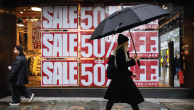Introduction and Summary

As the 90’s economic boom fades into history, one of its legacies is the increasing number of Americans who see society as divided between the ‘haves’ and the ‘have-nots.’ More than four-in-ten (44%) now believe the nation is split along these lines, compared to just 26% who felt that way in 1988, when the previous decade’s boom was coming to a close. Reinforcing the perception of growing economic stratification is significant evidence that the poor made only a marginal improvement in their financial well-being over the past decade, while middle- and upper-income Americans substantially bettered their lot in life.
Reports of deprivation — not having enough money to buy food, clothing or medical care — are as widespread today as they have been in the past three decades. People on the bottom third of the income scale are only slightly more satisfied with their ability to afford the necessities of life than they were in the early 1990’s. At the same time, middle-income and affluent people are much more satisfied than they were then. Unlike the poor, they now say it is easier to afford housing, appliances, vacations and going out.

Still, the fizzling economy and potential for a new energy crisis have cooled the public’s financial enthusiasm. Fewer Americans in all income classes rate their financial condition positively compared to 2000. Rising energy costs are often volunteered as a top problem of any sort facing families these days. This problem may be particularly acute for those with family incomes of less than $50,000 a year, fully a third of whom reported occasions when they could not pay their utility bills this year. And 49% of people with family incomes of under $30,000 a year recalled a time in the past 12 months when they did not have enough money for gasoline.1
The record high level of consumer debt being carried by Americans is adding to their financial pressures. Compared to a comparable survey a decade ago, a larger percentage of respondents today say they owe more than they can afford. This is especially true for the middle and lower classes, who are also reeling from higher energy costs. More than a third of people with annual family incomes of under $50,000 say they have more credit card and installment loan debt than they can afford, compared to just 7% of those with incomes of $100,000 or more.
The poll finds affluent people — those with annual family incomes of $75,000 or more — have been far less affected by the downturn in the stock market than poorer and middle class people have been by changes in the economy. A quarter of affluent Americans who own stock have cut back on vacation spending in response to the market slide. But many more people with lower incomes, who don’t have stock portfolios, not only have put off vacations but also have delayed major purchases including new homes or home improvements.
These are the principal findings of the latest survey by the Pew Research Center, conducted among a nationwide survey of 1,200 adults from June 13-17. The survey finds that despite the public’s growing economic concerns, a majority (57%) have not thought much about the tax rebate checks of up to $600 they will be receiving later this year. Surprisingly, hard-pressed people with family incomes of $30,000 annually or less are only marginally more likely to say they are anticipating the checks than those with incomes of at least $75,000 (37% vs. 32%).

President Bush, whose approval ratings continue to slip amid growing worries about energy costs, appears to have made little progress in communicating his concerns for the poor. Almost as many people today (43%) think that Bush is mostly concerned about helping society’s ‘haves’ as thought that way about former President Ronald Reagan in 1988 (49%). In another cautionary note for the administration, the survey finds more Americans now describing themselves as ‘have-nots.’




